Classical theories of International Trade 2 International Trade

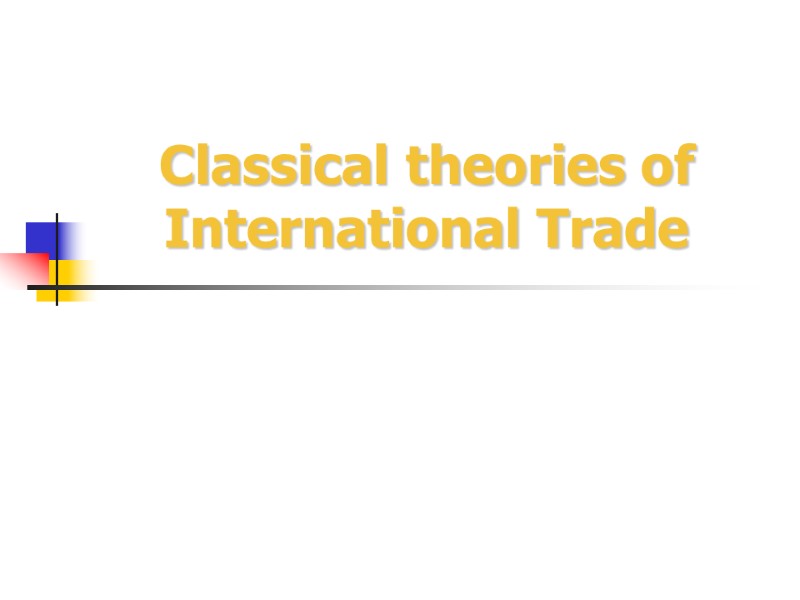
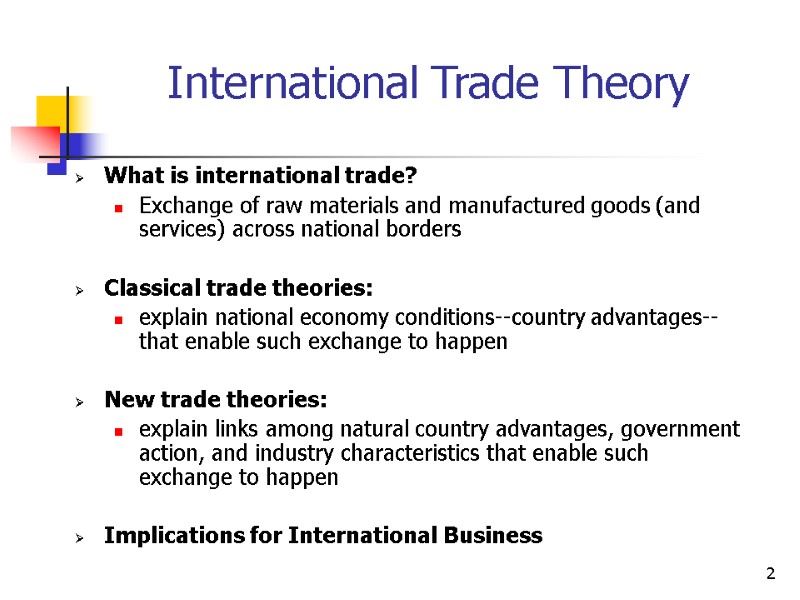
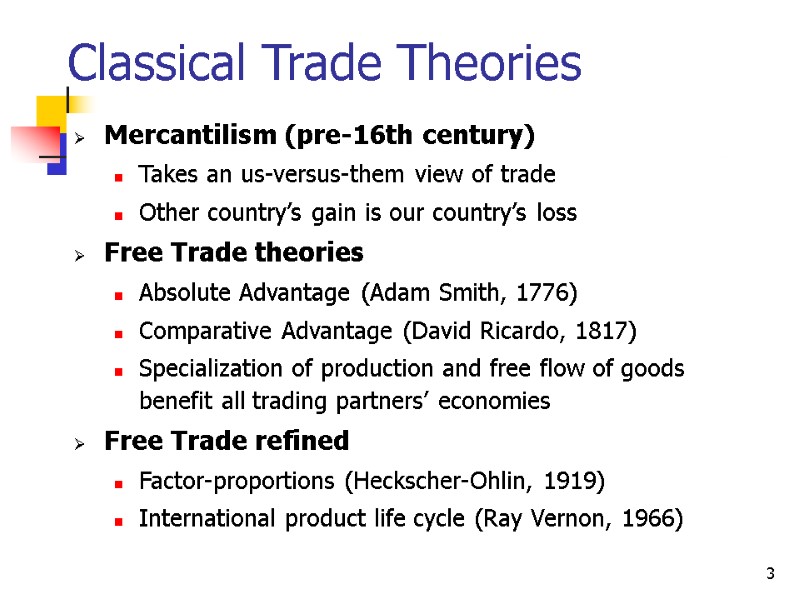
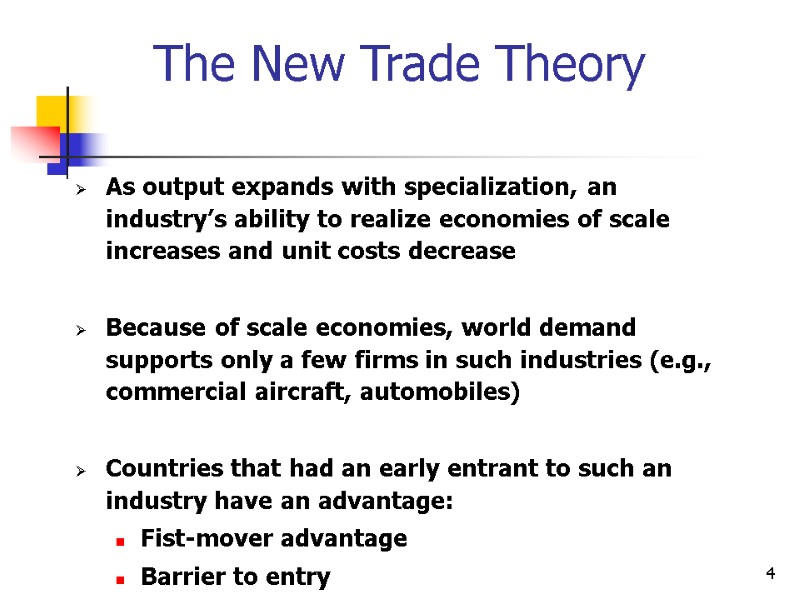
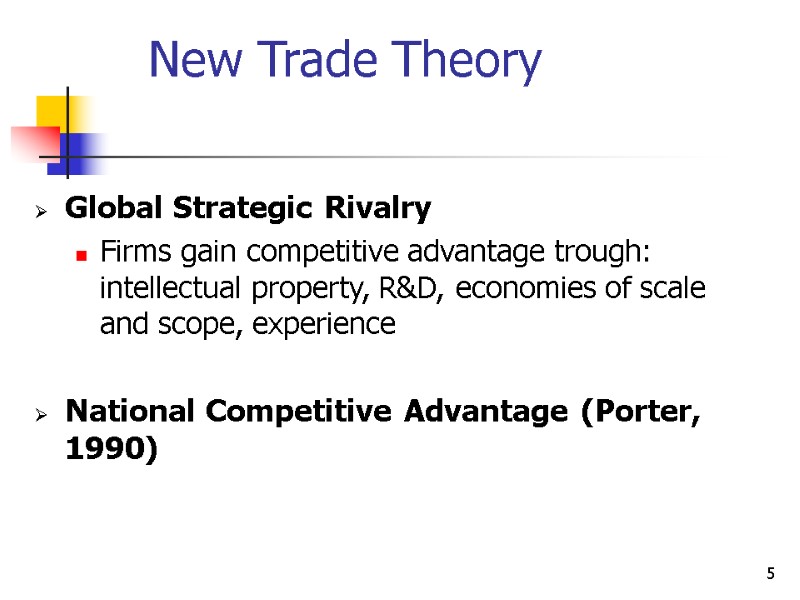
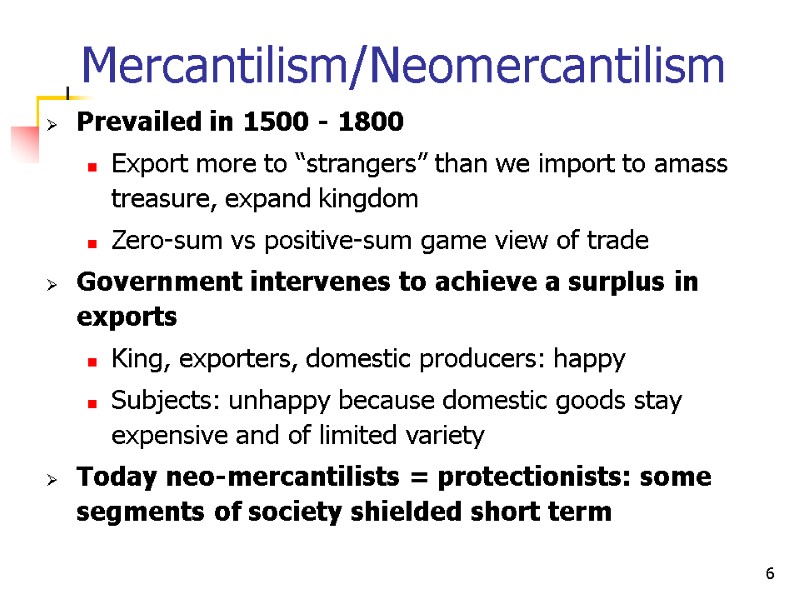
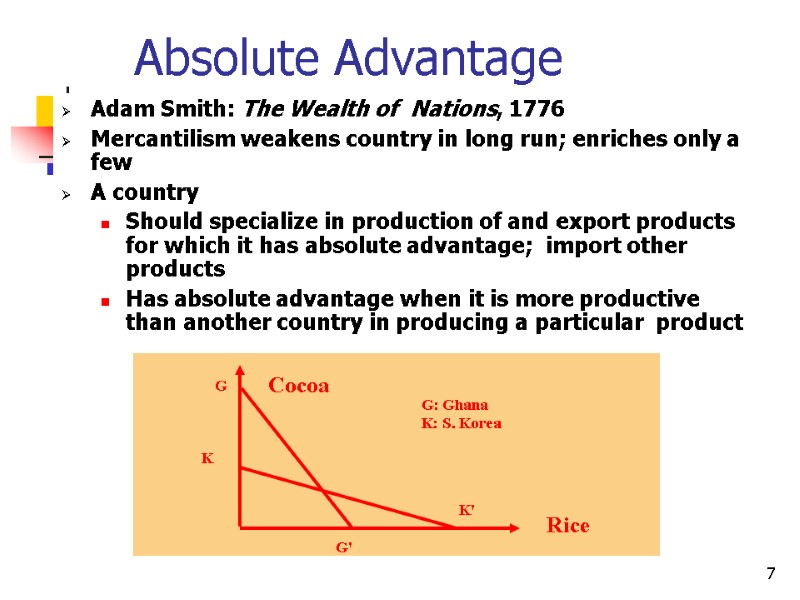
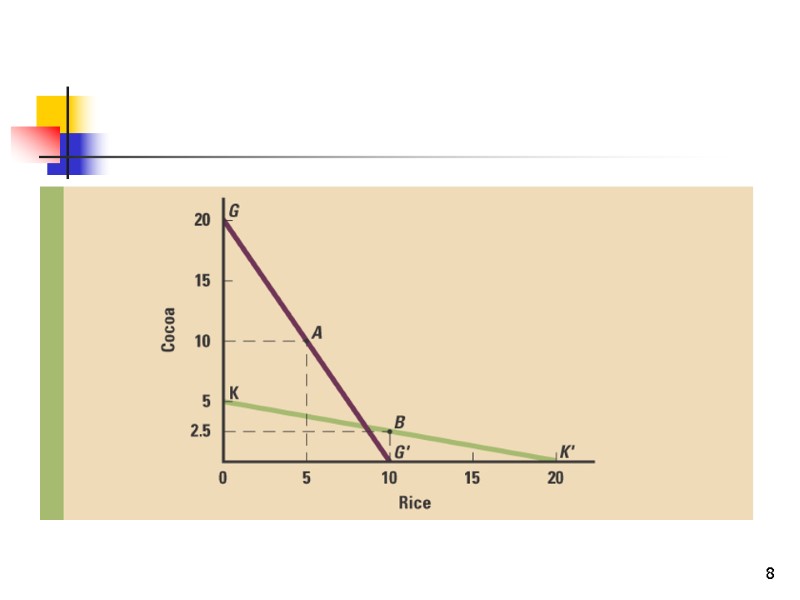
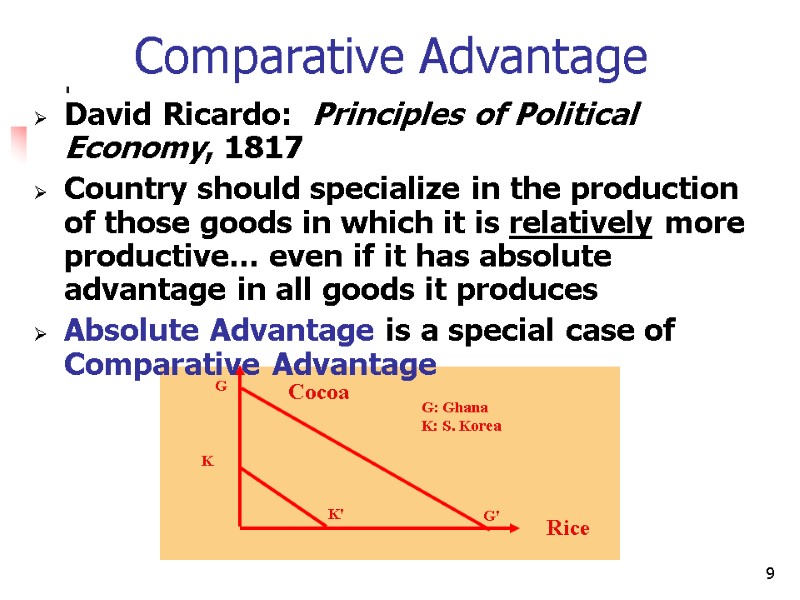

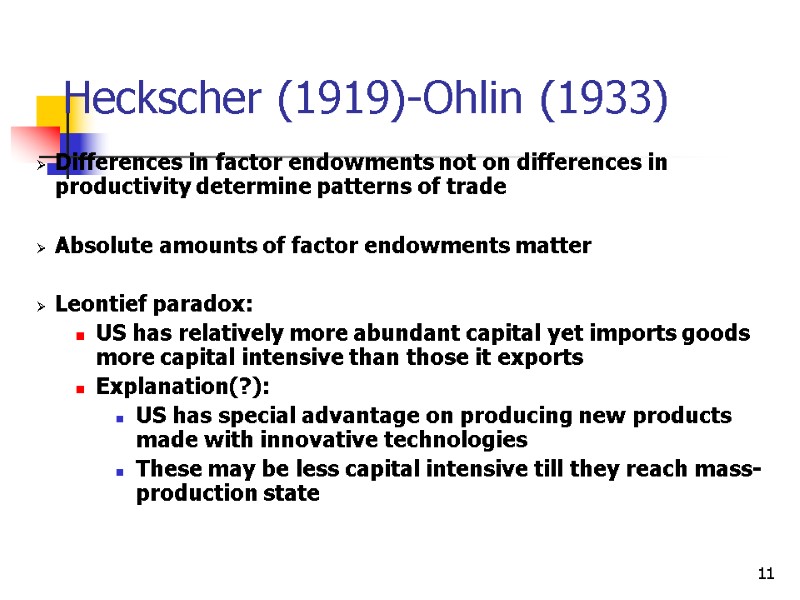


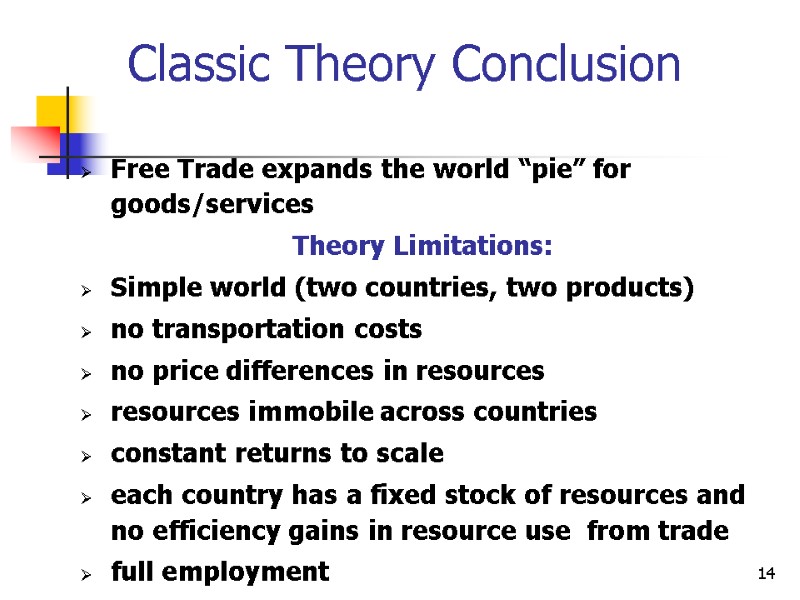
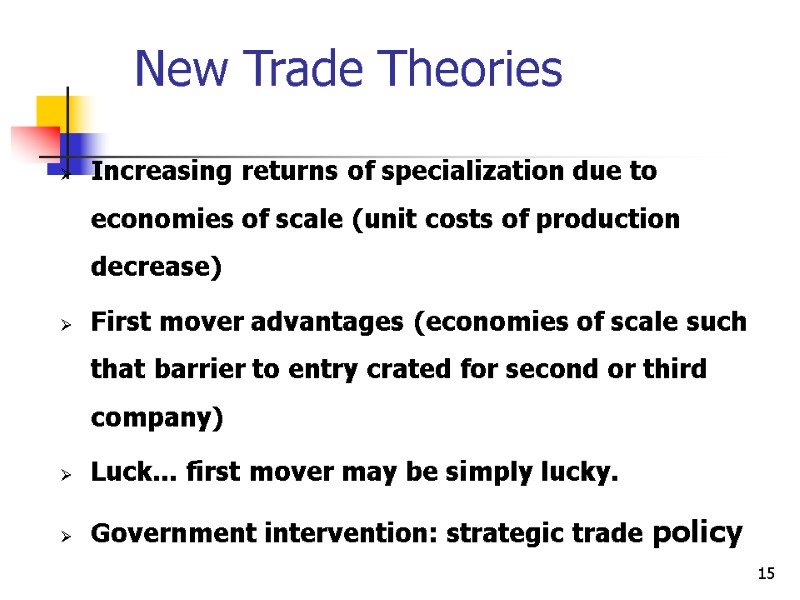
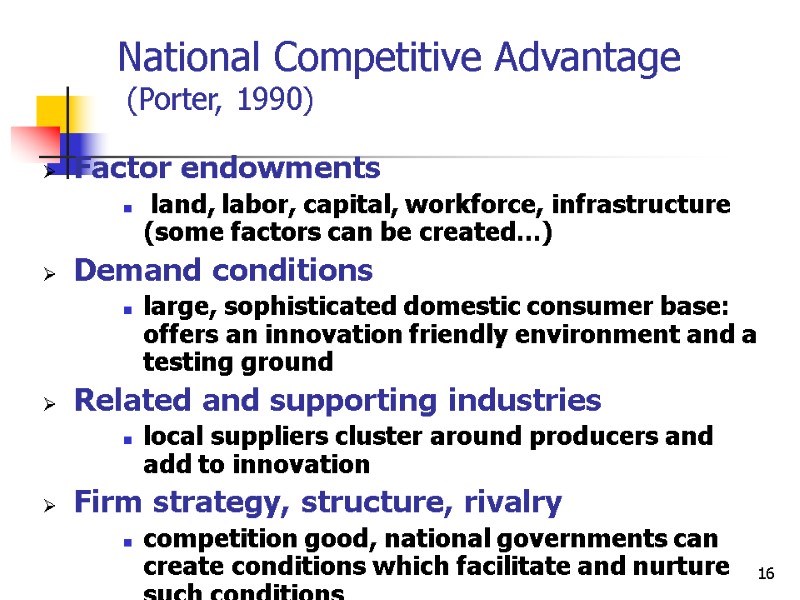
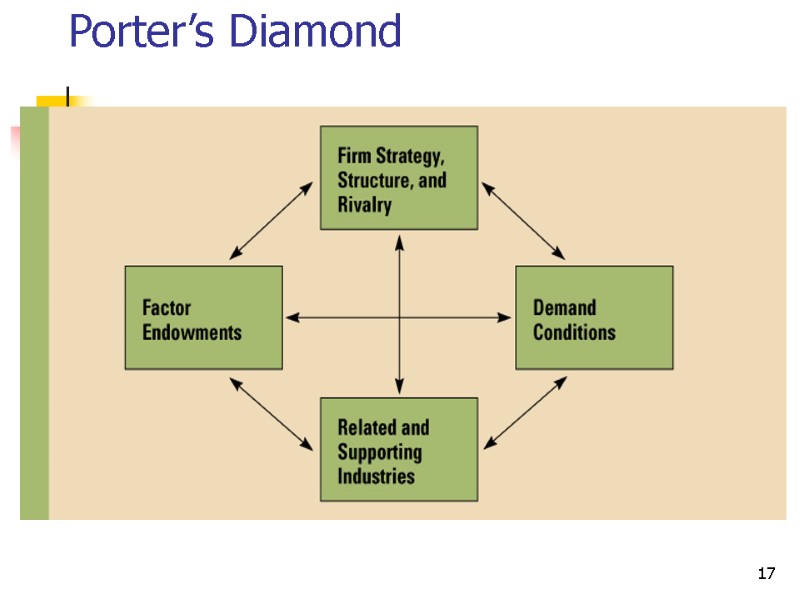
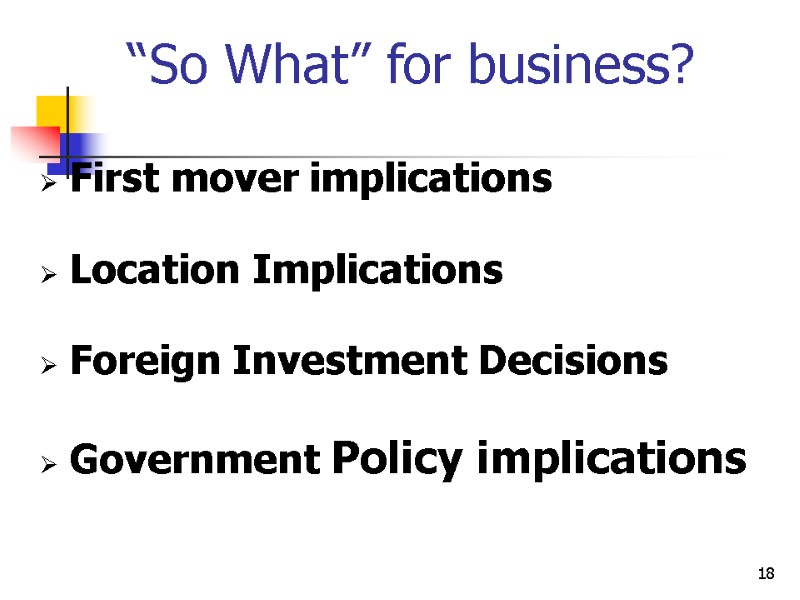
13250-class_th_of_int_trade_-_lecture_7.ppt
- Количество слайдов: 18
 Classical theories of International Trade
Classical theories of International Trade
 2 International Trade Theory What is international trade? Exchange of raw materials and manufactured goods (and services) across national borders Classical trade theories: explain national economy conditions--country advantages--that enable such exchange to happen New trade theories: explain links among natural country advantages, government action, and industry characteristics that enable such exchange to happen Implications for International Business
2 International Trade Theory What is international trade? Exchange of raw materials and manufactured goods (and services) across national borders Classical trade theories: explain national economy conditions--country advantages--that enable such exchange to happen New trade theories: explain links among natural country advantages, government action, and industry characteristics that enable such exchange to happen Implications for International Business
 3 Classical Trade Theories Mercantilism (pre-16th century) Takes an us-versus-them view of trade Other country’s gain is our country’s loss Free Trade theories Absolute Advantage (Adam Smith, 1776) Comparative Advantage (David Ricardo, 1817) Specialization of production and free flow of goods benefit all trading partners’ economies Free Trade refined Factor-proportions (Heckscher-Ohlin, 1919) International product life cycle (Ray Vernon, 1966)
3 Classical Trade Theories Mercantilism (pre-16th century) Takes an us-versus-them view of trade Other country’s gain is our country’s loss Free Trade theories Absolute Advantage (Adam Smith, 1776) Comparative Advantage (David Ricardo, 1817) Specialization of production and free flow of goods benefit all trading partners’ economies Free Trade refined Factor-proportions (Heckscher-Ohlin, 1919) International product life cycle (Ray Vernon, 1966)
 4 The New Trade Theory As output expands with specialization, an industry’s ability to realize economies of scale increases and unit costs decrease Because of scale economies, world demand supports only a few firms in such industries (e.g., commercial aircraft, automobiles) Countries that had an early entrant to such an industry have an advantage: Fist-mover advantage Barrier to entry
4 The New Trade Theory As output expands with specialization, an industry’s ability to realize economies of scale increases and unit costs decrease Because of scale economies, world demand supports only a few firms in such industries (e.g., commercial aircraft, automobiles) Countries that had an early entrant to such an industry have an advantage: Fist-mover advantage Barrier to entry
 5 New Trade Theory Global Strategic Rivalry Firms gain competitive advantage trough: intellectual property, R&D, economies of scale and scope, experience National Competitive Advantage (Porter, 1990)
5 New Trade Theory Global Strategic Rivalry Firms gain competitive advantage trough: intellectual property, R&D, economies of scale and scope, experience National Competitive Advantage (Porter, 1990)
 6 Mercantilism/Neomercantilism Prevailed in 1500 - 1800 Export more to “strangers” than we import to amass treasure, expand kingdom Zero-sum vs positive-sum game view of trade Government intervenes to achieve a surplus in exports King, exporters, domestic producers: happy Subjects: unhappy because domestic goods stay expensive and of limited variety Today neo-mercantilists = protectionists: some segments of society shielded short term
6 Mercantilism/Neomercantilism Prevailed in 1500 - 1800 Export more to “strangers” than we import to amass treasure, expand kingdom Zero-sum vs positive-sum game view of trade Government intervenes to achieve a surplus in exports King, exporters, domestic producers: happy Subjects: unhappy because domestic goods stay expensive and of limited variety Today neo-mercantilists = protectionists: some segments of society shielded short term
 7 Absolute Advantage Adam Smith: The Wealth of Nations, 1776 Mercantilism weakens country in long run; enriches only a few A country Should specialize in production of and export products for which it has absolute advantage; import other products Has absolute advantage when it is more productive than another country in producing a particular product Rice Cocoa G G' K K' G: Ghana K: S. Korea
7 Absolute Advantage Adam Smith: The Wealth of Nations, 1776 Mercantilism weakens country in long run; enriches only a few A country Should specialize in production of and export products for which it has absolute advantage; import other products Has absolute advantage when it is more productive than another country in producing a particular product Rice Cocoa G G' K K' G: Ghana K: S. Korea
 8
8
 9 Comparative Advantage David Ricardo: Principles of Political Economy, 1817 Country should specialize in the production of those goods in which it is relatively more productive... even if it has absolute advantage in all goods it produces Absolute Advantage is a special case of Comparative Advantage Rice Cocoa G K K' G' G: Ghana K: S. Korea
9 Comparative Advantage David Ricardo: Principles of Political Economy, 1817 Country should specialize in the production of those goods in which it is relatively more productive... even if it has absolute advantage in all goods it produces Absolute Advantage is a special case of Comparative Advantage Rice Cocoa G K K' G' G: Ghana K: S. Korea
 10
10
 11 Heckscher (1919)-Ohlin (1933) Differences in factor endowments not on differences in productivity determine patterns of trade Absolute amounts of factor endowments matter Leontief paradox: US has relatively more abundant capital yet imports goods more capital intensive than those it exports Explanation(?): US has special advantage on producing new products made with innovative technologies These may be less capital intensive till they reach mass-production state
11 Heckscher (1919)-Ohlin (1933) Differences in factor endowments not on differences in productivity determine patterns of trade Absolute amounts of factor endowments matter Leontief paradox: US has relatively more abundant capital yet imports goods more capital intensive than those it exports Explanation(?): US has special advantage on producing new products made with innovative technologies These may be less capital intensive till they reach mass-production state
 12 Theory of Relative Factor Endowments (Heckscher-Ohlin) Factor endowments vary among countries Products differ according to the types of factors that they need as inputs A country has a comparative advantage in producing products that intensively use factors of production (resources) it has in abundance Factors of production: labor, capital, land, human resources, technology
12 Theory of Relative Factor Endowments (Heckscher-Ohlin) Factor endowments vary among countries Products differ according to the types of factors that they need as inputs A country has a comparative advantage in producing products that intensively use factors of production (resources) it has in abundance Factors of production: labor, capital, land, human resources, technology
 13 International Product Life-Cycle (Vernon) Most new products conceived / produced in the US in 20th century US firms kept production close to their market initially Aid decisions; minimize risk of new product introductions Demand not based on price; low product cost not an issue Limited initial demand in other advanced countries initially Exports more attractive than overseas production When demand increases in advanced countries, production follows With demand expansion in secondary markets Product becomes standardized production moves to low production cost areas Product now imported to US and to advanced countries
13 International Product Life-Cycle (Vernon) Most new products conceived / produced in the US in 20th century US firms kept production close to their market initially Aid decisions; minimize risk of new product introductions Demand not based on price; low product cost not an issue Limited initial demand in other advanced countries initially Exports more attractive than overseas production When demand increases in advanced countries, production follows With demand expansion in secondary markets Product becomes standardized production moves to low production cost areas Product now imported to US and to advanced countries
 14 Classic Theory Conclusion Free Trade expands the world “pie” for goods/services Theory Limitations: Simple world (two countries, two products) no transportation costs no price differences in resources resources immobile across countries constant returns to scale each country has a fixed stock of resources and no efficiency gains in resource use from trade full employment
14 Classic Theory Conclusion Free Trade expands the world “pie” for goods/services Theory Limitations: Simple world (two countries, two products) no transportation costs no price differences in resources resources immobile across countries constant returns to scale each country has a fixed stock of resources and no efficiency gains in resource use from trade full employment
 15 New Trade Theories Increasing returns of specialization due to economies of scale (unit costs of production decrease) First mover advantages (economies of scale such that barrier to entry crated for second or third company) Luck... first mover may be simply lucky. Government intervention: strategic trade policy
15 New Trade Theories Increasing returns of specialization due to economies of scale (unit costs of production decrease) First mover advantages (economies of scale such that barrier to entry crated for second or third company) Luck... first mover may be simply lucky. Government intervention: strategic trade policy
 16 National Competitive Advantage (Porter, 1990) Factor endowments land, labor, capital, workforce, infrastructure (some factors can be created...) Demand conditions large, sophisticated domestic consumer base: offers an innovation friendly environment and a testing ground Related and supporting industries local suppliers cluster around producers and add to innovation Firm strategy, structure, rivalry competition good, national governments can create conditions which facilitate and nurture such conditions
16 National Competitive Advantage (Porter, 1990) Factor endowments land, labor, capital, workforce, infrastructure (some factors can be created...) Demand conditions large, sophisticated domestic consumer base: offers an innovation friendly environment and a testing ground Related and supporting industries local suppliers cluster around producers and add to innovation Firm strategy, structure, rivalry competition good, national governments can create conditions which facilitate and nurture such conditions
 17 Porter’s Diamond
17 Porter’s Diamond
 18 “So What” for business? First mover implications Location Implications Foreign Investment Decisions Government Policy implications
18 “So What” for business? First mover implications Location Implications Foreign Investment Decisions Government Policy implications

